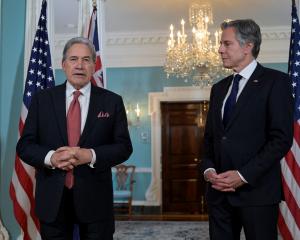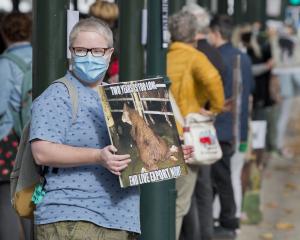There's a good exhibition at the Hocken, but first an update.
In the last column I named the elected representatives who had replied to my emails raising my concerns about the proposed pedestrian and cycle bridge over the railway tracks at Rattray St. I have had more replies since.
Cr David Benson Pope had not received my email. His concerns and priorities are close to mine. He agrees the viewshaft is important and that a level crossing or an underpass would be preferable.
He confirms my impression KiwiRail has always resisted reinstating the level crossing but has some hope of persuading them to relent by advocating a gate system which would prevent track access when the gates are open.
Access would be limited by the operation of trains but this would be cheaper than a tunnel or a bridge. His next preference is for an underpass for pedestrians and cyclists which he also thinks would be cheaper than a bridge.
I have previously said an underpass would ideally accommodate light vehicles, too, but Cr Kate Wilson has pointed out there are concerns about light vehicles entering State Highway 88 beyond the tracks which I acknowledge.
It's not so hard for cars and vans to use the nearby Jetty St overbridge. That's more daunting for pedestrians and cyclists especially in poor weather. I'm happy if the underpass accommodates pedestrians and cyclists only.
I've also had an email from Cr Aaron Hawkins. He acknowledges that until now he had been putting connectivity ahead of aesthetics. He has discussed the matter with Cr Benson Pope and it was put on the agenda for a meeting between elected representatives and staff scheduled last week. I found his reply encouraging.
Cr Jinty MacTavish also replied. She had received my email but had been very busy with a large backlog of emails and apologised for not replying sooner. I realise all the elected people have to deal with masses of information and questions and appreciate them taking the trouble to reply to me, in some cases at considerable length.
Cr MacTavish understands my concern about views and the associated historic connections and thanked me for drawing them to councillors' attention.
She understands a bridge is not being considered as the only option but also that a level crossing is not being considered as she understands KiwiRail has ruled it out. I still think it would be worth trying them again either with Cr Vandervis' suggested trade offs or Cr Benson Pope's suggestion.
In addition to an underpass, Cr MacTavish thought an extension to the Jetty St overbridge would be considered.
That could be visually unobjectionable but I think the gradient and, if it is open, the unpleasantness of using it in poor weather would make it less attractive than an underpass. For easy connectivity, a nearer and shorter connection is best for cyclists and pedestrians.
I thank everyone who has replied and feel a bit reassured but wait with diminished anxiety to see what is decided.
The exhibition at the Hocken Collections ''Picture/Poem'' compares and contrasts works by Cilla McQueen (b.1949) and Joanna Paul (1945 2003). Right by the entrance there's a pair of self portraits which immediately launches the investigation.
McQueen's Self Portrait is an ink on paper study of a face in profile with Picassesque overtones. The Spanish artist, showing a head in profile also gives us an image of the missing side of the face.
While McQueen's portrait is a profile the should be invisible frame of a pair of spectacles has popped up, giving the image a slightly zany, mad professor feeling. It is delicately drawn with a slightly wandering, tentative line.
Below it is Paul's untitled self portrait, a full face head and shoulders study. The line is firmer and the model has a melancholy expression. These two women artists of near age who both lived for extended periods in Dunedin are similar though also distinctly different.
Another pair of landscapes also makes for comparative viewing. McQueen's From the Studio (Tereweka) 1981 is a pencil sketch of Harbour Cone from across the harbour. No buildings are allowed to intrude. Foliage is indicated by scribbles.
This is a genre first developed by Toss Woollaston, later adopted by a youthful Colin McCahon and also used by Ralph Hotere when he was young. It is almost a form of currency for New Zealand artists.
Next to it is Paul's Port Chalmers for Sale a 1997 pencil and watercolour of the same view. It has a political point to make. While there is one of Paul's anthropomorphised houses in the foreground much else of Port Chalmers simply has the title inscribed across it as a slogan.
It is coloured and here, too, foliage is indicated by scribbles. Paul's work is more feminine and McQueen's less so. There's much more in the show but these two pairs are indicative.
• Peter Entwisle is a Dunedin curator, historian and writer.












